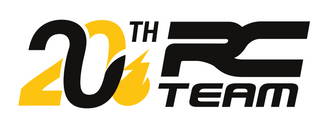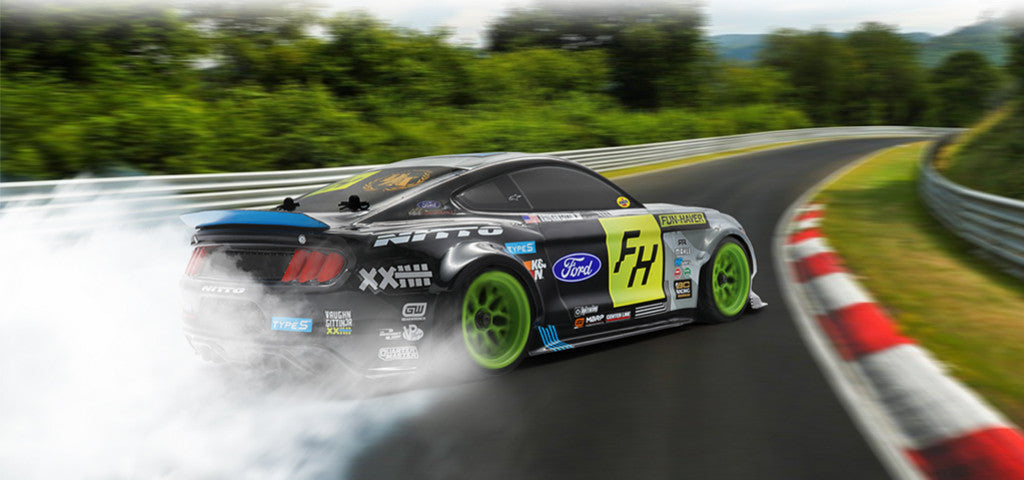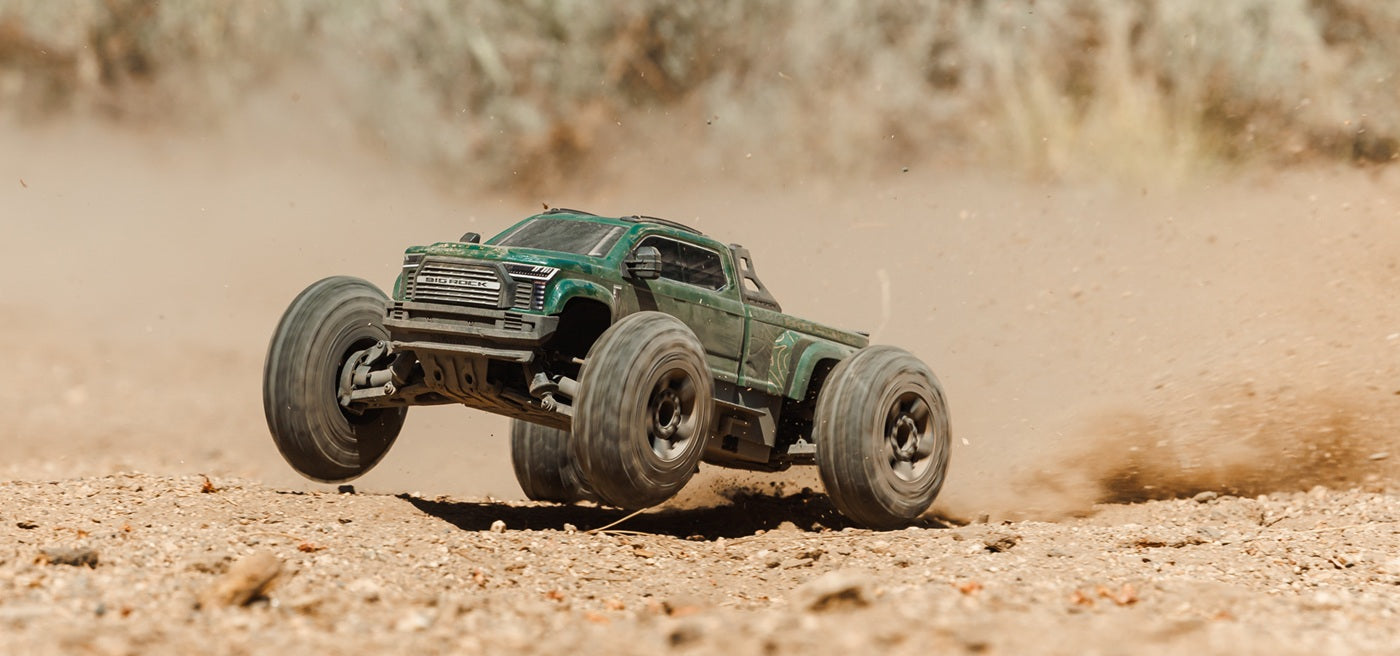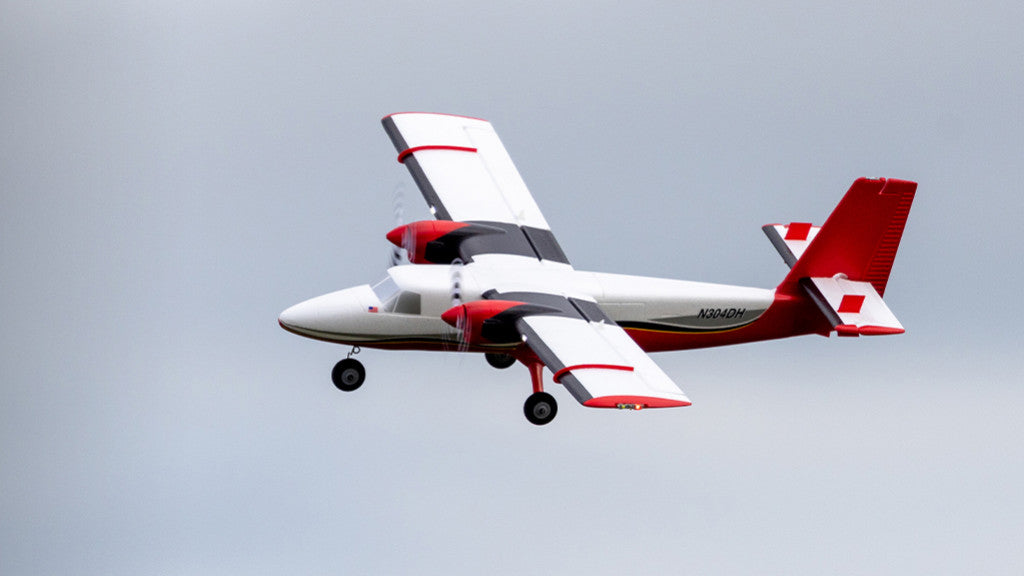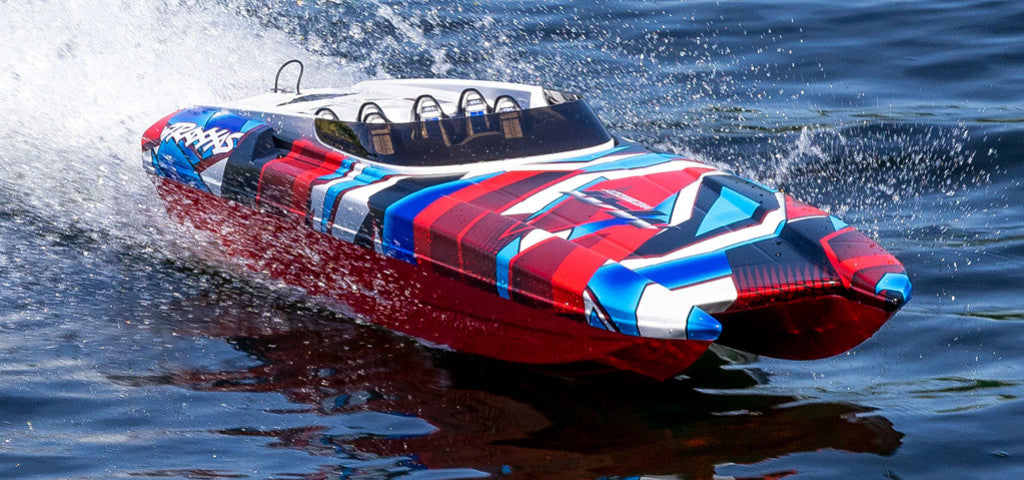Radio-controlled (RC) car drifting is a style of driving that involves performing controlled skids. This style of racing was popularized by car drift racing , where drivers try to keep their vehicle in a controlled slide for as long as possible while taking sharp turns at high speeds. RC drifting takes this same idea, but with radio-controlled cars that can be driven indoors or outdoors.
What is drifting?
Drifting involves intentionally oversteering, which causes the tires to lose grip and the car to skid. With precisely measured braking, acceleration and counter-steering, an experienced rider can control these slippages and use them to quickly maneuver through corners.
It's easy to master the basics of RC car drifting . Perfecting your skills will take some time and practice. With the following tips, you can get off to a good start in one of the fastest growing disciplines in RC: RC drift cars .
There are two types of RC drifting: competition drifting and recreational drifting . Competitive drifting is similar to car drift racing, where drivers are evaluated on their ability to keep their vehicle in a controlled skid for as long as possible while taking sharp turns at high speeds. Leisure drifting is done with friends and is more permissive. In this type of RC drifting, drivers are free to show off their drifting skills in different ways, favoring speed or style.
How to choose my drift car?
RTR or KIT?
The choice of whether or not to build your car is essentially based on your desires and your experience.
A car to build (in KIT ) will allow you to select each part according to your needs and to carefully tune your drift RC. However, the choice and assembly require experience, which is why we reserve it for experienced modelers .
The RTR car is the ideal model for beginners , those who do not want to build their model or who are not DIY enthusiasts. This is a vehicle already assembled and tuned, which will allow you to experience drifting right out of the box.
What type of car?
The choice of car has a direct impact on drift performance. In fact, off-road cars are unsuitable for this type of practice. We prefer an RC car designed for drifting . They are generally electric , with stiffer suspension and low ground clearance.
RC cars and RC chassis designed for drifting allow for many tuning and modification options. The suspension geometry will likely be fully adjustable and include drift-specific spring and damper settings. By tuning your car, you will be able to adjust its behavior to your needs. You can also drift with a classic track car , but not as well as with an RC vehicle designed for drifting.
Usually, drift cars have two-wheel drive (2WD) rear-wheel drive, but those who want to start slowly can turn to 4WD cars . These are more maneuverable, provided they are equipped with hard tires, without tread (ideally slick tires ).
What equipment for my car?
There are several things to consider when purchasing an RC drift car . The first is the type of tires. It is preferable to choose a set of smooth “slick” tires for drifting since tires with a tread, even light, will grip the ground too much and prevent the car from sliding.
The second is the type of engine used. Brushless motors are generally faster and more powerful than brushed motors, but are also more expensive to purchase.
Finally, the quality of the components used in the construction of the car. Higher quality components will provide better durability and overall performance.
On which surface to practice?
It is recommended to have a large enough area to practice RC drifting, preferably a race track built specifically for RC drifting or a smooth concrete parking lot. A flat, smooth surface is essential to allow cars to skid in a controlled manner. If you don't have access to a running track or parking lot, you can also use a smooth tarmac or cement surface. Surfaces that are too rough should be avoided, such as gravel, rough paving stones or earth.
Race tracks specifically built for drifting feature tight turns and long straights to allow drivers to maintain speed and slide in a controlled manner. If you improvise a track in a parking lot, you can demarcate it using blocks, taking care to create a straight line followed by several hairpin turns.
Driving basics
When drifting, whether competitively or at home, control is more important than speed. To achieve great slides, you must therefore master your trajectory . The first concepts to understand are the “steering point”, the “rope point” (also called “Apex”) and the “exit point”.

What is the turning point?
The turning point corresponds to the outer zone at the entrance to the turn. When the car enters this space, press the brake to release the rear wheels then turn the nose of the car towards the apex.
What is rope stitch?
The apex point is the innermost point of the turn. On a turn with balanced curvature, it will be located more in the middle, on a turn with an accentuated curvature, it will be more at the beginning, on a turn with an accentuated curvature at the end, it will be located more at the end.
The apex is the area where the nose of the car will be closest to the inside of the corner. It marks the end of the steering and the beginning of the countersteering to exit the turn.
What is the exit point?
The exit point is located on the outside at the end of the turn, it marks the end of the drift. Aim for this point as soon as the apex point has passed, until the wheels are straight again.
The basic technique for drifting
The first technique to learn is to initiate a drift by accelerating your RC car around the corner. Performing a regular turn with any RC car is quite simple. You just need to steer your RC vehicle in the desired direction. Normally you reduce the speed a little to keep all four tires in contact with the road. But if you want to crash your RC car or truck around a corner, losing tire traction is part of the plan.
This time, approach the turn at high speed . At the turning point, turn the steering wheel and brake hard simultaneously so that the rear of your RC car loses grip. This is the start of your drift. Countersteer slightly to keep the nose of your car pointed toward the apex of the turn until your car slides around it, then steer back to neutral when exiting the turn. Then, speed up!
These are the basics of RC drifting . With practice and experience, you will be able to drift repeatedly through multiple turns and even change your drift angle.
